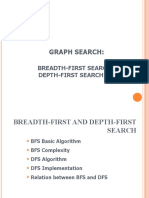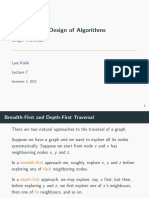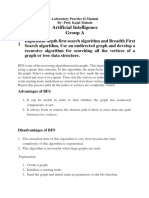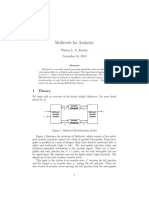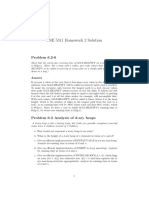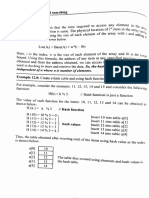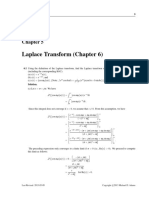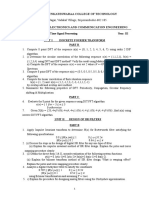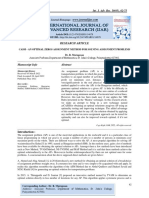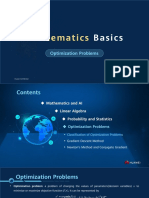0% found this document useful (0 votes)
17 views7 pagesDepth-First Search (DFS) Algorithm
Depth-First Search (DFS) is an algorithm for traversing tree or graph structures by exploring as far as possible along each branch before backtracking, using a stack data structure. The algorithm marks visited vertices to avoid cycles and can be implemented recursively or iteratively. DFS is optimal for tasks like topological sorting, pathfinding, cycle detection, and finding connected components.
Uploaded by
avi003Copyright
© © All Rights Reserved
We take content rights seriously. If you suspect this is your content, claim it here.
Available Formats
Download as PPTX, PDF, TXT or read online on Scribd
0% found this document useful (0 votes)
17 views7 pagesDepth-First Search (DFS) Algorithm
Depth-First Search (DFS) is an algorithm for traversing tree or graph structures by exploring as far as possible along each branch before backtracking, using a stack data structure. The algorithm marks visited vertices to avoid cycles and can be implemented recursively or iteratively. DFS is optimal for tasks like topological sorting, pathfinding, cycle detection, and finding connected components.
Uploaded by
avi003Copyright
© © All Rights Reserved
We take content rights seriously. If you suspect this is your content, claim it here.
Available Formats
Download as PPTX, PDF, TXT or read online on Scribd
/ 7

















